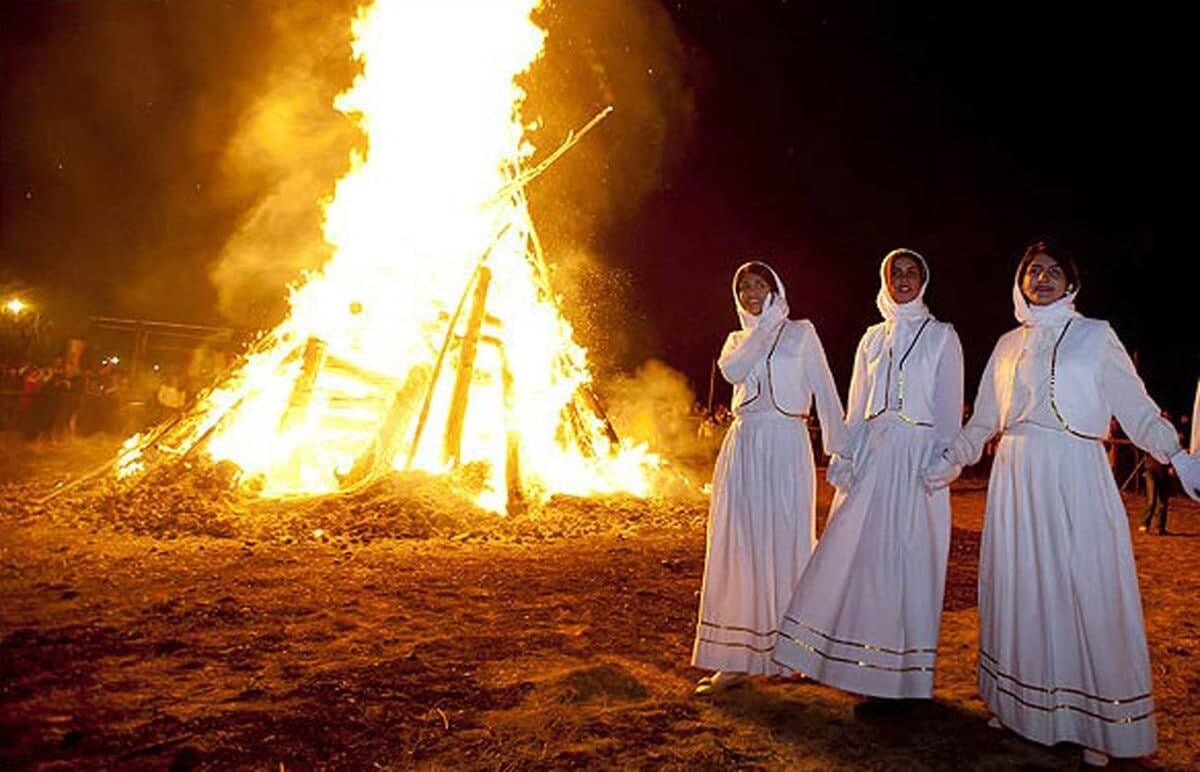How did Sadeh festival become UNESCO-listed? Expert explains

TEHRAN – Last week, the ancient Sadeh festival earned a prestigious spot on UNESCO’s list of intangible cultural heritage, marking a significant recognition shared by Iran and Tajikistan.
Alireza Hassanzadeh, an Iranian anthropologist responsible for pursuing that registration has explained the process of compiling its UNESCO-required dossier, its geographical scope, and why only Tajikistan participated in its dossier.
“Sadeh, as one of Iran’s ancient rituals, takes place in two cultural domains of Zoroastrians in Iran, such as cities in cultural areas like Kerman, Yazd, Shiraz, Isfahan, and more. On the other hand, it is also celebrated in the cultural domain of Khorasan, especially among rural communities,” Hassanzadeh, the official responsible for compiling the dossier for the Sadeh festival, told ISNA.
In this ceremony, which is celebrated in the early evening of the tenth of Bahman (which falls on January 30, 2024) fire, along with water, wind, and earth, is considered sacred elements, playing practical roles in many Iranian festivities. Ancient Iranians believed that the fire lit on this day symbolized the warming of the earth and its preparation for the arrival of spring.
According to Hassanzadeh, all intangible heritage dossiers are prepared through the collaboration of communities and groups that safeguard intangible elements.
“The dossier for the Sadeh Festival was prepared based on this principle. This intangible heritage element belongs to Iran’s cultural domain, and the Tajik people also celebrate it. Considering the significance of agricultural heritage in Tajikistan, this ritual there resembles more the cultural domain of Khorasan in Iran.”
Hassanzadeh, who presides over Iran’s Anthropology Research Center, referred to the actions needed to revitalize and preserve the Sadeh festival and said: “Generally, each intangible heritage dossier entails a set of careful measures to conserve and promote the elements of intangible heritage, which are detailed in the Sadeh festival’s dossier. This involves the organizers of this ritual, non-governmental organizations, and governmental bodies.”
The duty of governmental bodies includes facilitating the celebration of this ritual in various regions of the country and assisting people and non-governmental organizations, he said.
He stressed that global registration of this element should help provide more support to local communities and organizers of this ritual from governmental bodies to further preserve the time-honored tradition. “We need the assistance of local communities and defining various cultural and media activities in the cultural and economic sphere, as highlighted in the dossier for both countries.”
Ancient Iranians believed that the fire lit on this day symbolized the warming of the earth and its preparation for the arrival of spring.Elsewhere in his remarks, the experts reminded of the fondness for preserving cultural heritage among Iranians. “In fact, our most important literary and identity sources, such as the Shahnameh, contain detailed and vital references to this element. Sadeh symbolizes the unity of Iranian ethnicities and their peaceful coexistence over the centuries. Sadeh has been and remains one of the sources of unity and coherence among Iranians.”
Ultimately, one of the demands of the Iranian people, especially Zoroastrians, was the global registration of this ancient festival. Addressing these demands enhances social capital and promotes national cohesion. Strengthening Iran’s cultural discourse is another valuable outcome of this registration, displaying the status of heritage diplomacy, he explained.
The anthropologist also responded to a question of whether other countries could join this dossier besides Tajikistan and why we did not see further participation. “Currently, Iran and Tajikistan are the primary countries hosting this ritual extensively. In other countries besides these two, the mentioned celebration of Sadeh is not conducted on a broad scale. Note that fire festivals, like spring celebrations, are held in many countries, but these celebrations are not equivalent to the Sadeh festival. Sadeh has its distinct definition, and it remains as it is, just like understanding the Chinese New Year due to its connection with spring, akin to Nowruz (which is not).”
Hassanzadeh added that clarity in defining the element for global registration is crucial. Therefore, the addition of proposed countries is not necessarily seen as an advantage. Few cases, like Nowruz, can have both a clear understanding and definition of the ritual and a higher number of proposed countries, making their addition feasible.
The festivity, usually occurring on January 30th, derives its name from the Farsi word for “one hundred” (Sad), marking 50 days and 50 nights before Nowruz, the commencement of the Iranian calendar year on March 21st. Rooted in ancient traditions, it is celebrated predominantly by Iranian Zoroastrians in cities like Yazd, Tehran, Shiraz, and Kerman. The festival commemorates the mythical discovery of fire, observed with the lighting of a large woodpile during its zenith.
On December 6, in a nod to Iran’s vibrant tapestry of customs and history, the Sadeh festival, together with two other Iranian elements, namely Iftar and its socio-cultural traditions, and the intricate artistry of Tahzib in illuminated manuscripts found their way to the UNESCO list for intangible cultural heritage during the 18th session of the Intergovernmental Committee for the Safeguarding of the Intangible Cultural Heritage, being held in Kasane, Botswana, held from Dec. 4 to 9.
AFM
